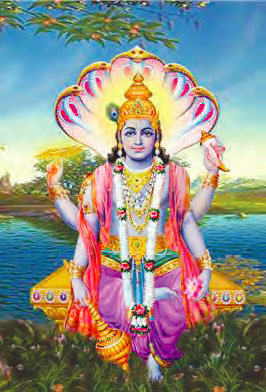
Nirjala Ekadashi is the most important and significant Ekadashis. As per Hindu calendar Ekadashi falls on the eleventh day of every lunar fortnight. So, there are 24 Ekadasis in a year. Ekadashi Vrat
is considered highly pious and is assumed to be one of the ways to attain Moksha. Nirjala Ekadashi falls on the Shukla paksha in the month of Jyestha (On June 5 this year). It is also called “Jyeshtha Shukla Ekadashi” or “Bhimsaini Ekadashi”. It is considered as one of the most rewarding fast.
Importance of Nirjala Ekadashi
The greatness of Nirjala Ekadasi was explained by Sage Vyasa. ? It is equal to going on pilgrimage. ? It provides virtue of all 24 Ekadashi.? It washes away all sin. ? Grants happiness, prosperity, longevity and moksha (salvation).? This Ekadasi happens before monsoon season and therefore it is also helps in cleansing the body.
How to Observe Nirjala Ekadashi Vrat
Nirjala means without water. Hence, fast is observed without water and food. It is considered as the most strict and hence, most sacred of all Ekadashis. This fast is extremely difficult to follow as it falls in the hot Indian summer. The 24 hours long fast begins from sunrise on Nirjala Ekadashi to sunrise the next day. People fast and offer puja to Lord Vishnu on this day.
The fast begins with Sandhyavandanam – a prayer. This prayer is performed in the evening before Nirjala Ekadashi, i.e. on 10th lunar day. After prayer devotee takes only one meal, without rice (as rice eating is prohibited). The strict fast continuous throughout Ekadashi. It gets over on next morning. Devotees offer prayer, tulsi, fruits, and sweets to Lord Vishnu and then finish their fast.
Rituals and celebrations of Nirjala Ekadasi
- ? Offer Puja to Lord Vishnu and seek his grace.
- ? Bath the idol of Lord Vishnu with Panchamrit.
- ? Wash with clean water and then dressed in new clothes.
- ? Offer flowers, incense, water, lamps and a hand fan.
- ? In evening, worship Vishnu with Durva grass.
- ? Visit nearby Vishnu temple and observe Jagran at night.
- ? Chant bhajans, Vishnu Sahasranama and other slokas dedicated to Lord Vishnu
- ? Donate clothes, food grains, umbrellas, hand-fans, pitchers filled with water, gold etc.
Story of Nirjala Ekadashi Vrat
Bhimsen –the second Pandava brother and big eater wanted to keep Ekadashi Vrat. All his brothers, wife Draupadi and mother Kunti observed Vrat on 24 Ekadasis throughout the year and request him to do the same. But he was unable to perform the ritual due to unbearable hunger pangs. Bhima, was upset due to his weak determination. He was also sacred of dishonouring to Lord Vishnu. So, when Maharishi Vyasa visited them Bhima asked him to find a solution. Sage Vyasa advised him to observe single Nirjala Ekadasi fasting. This fast would compensate for not observing all Ekadashi fasting in a year.
Bhima performed the fast with an ease but on the morning of very next day he became unconscious. Then he offered Ganga water with Tulsi to end up his day fast. Due to this legend Nirjala Ekadashi is also known as Bhimseni Ekadashi, Bhima Ekadashi or Pandava Ekadashi.
Nirjala Ekadashi’s Significance
As per Hindu mythology, Nirjala Ekadashi is a form of God Vishnu and helps in washing away all sins. Also, the devotees are blessed by Lord Vishnu and granted all the happiness, prosperity and a blissful life. It is also believed that by observing Nirjala Ekadashi fast one gains salvation (moksha) as the person at the time of death is not judged by Yama (God of Death). The one who observes fast is taken by the messengers of Vishnu to Vaikuntha, an abode of Vishnu after death.
 How To Observe Ekadashi Vrat
How To Observe Ekadashi Vrat
Legends take one back to the mythological story of Mahabharata as the Nirjala Ekadashi vrat has been mentioned therein. Kunit, mother of the Pandavas, Draupadi, wife of the Pandavas, and all the four Pandava brothers – Yudhisthira, Arjun, Nakula and Sahadeva used to observe Ekadashi vrats without fail.
However, the second Pandava brother, Bhima resisted from fasting as he was a voracious eater and wasn’t able to control his hunger. On one occasion, Bhima chose to observe the vrat but he also wanted to eat.
Hence, he went out to Ved Vyasa, the grandfather of the Pandavas, to seek help in observing the fast. While eating and fasting were not possible simultaneously, sage Vyasa suggested that he observe the Nirjala Ekadashi vrat, which includes the benefits of observing 24 Ekadashi vrats.
Nirjala Ekadashi is regarded as the strictest fast among all the Ekadashis in the Hindu religion as one cannot even drink water while observing it. The literal meaning of Nirjala is without water. Thus, all Vishnu devotees who take up this fast do not drink water nor eat any food during the entire day of fasting. Observing a Nirjala Ekadashi is highly beneficial as it is considered equivalent to going on a pilgrimage. The vrat begins at sunrise on the Ekadahsi and ends on the next day’s sunrise. The entire day of the Nirjala Ekadashi vrat is spent at Vishnu temples. Devotees also prefer spending the day at home by listening to stories from Bhagavad Purana or chanting bhajans dedicated to Lord Vishnu.
People who are under medications, having a poor health condition or disease, pregnant women and those who have just delivered a baby are relieved from observing this vrat. Therefore, it is advised not to keep this fast as one should not torture their body in the act of following customs and religious traditions. Instead, they can compensate for the fast by donating food and clothes to the poor and needy.




Be the first to comment